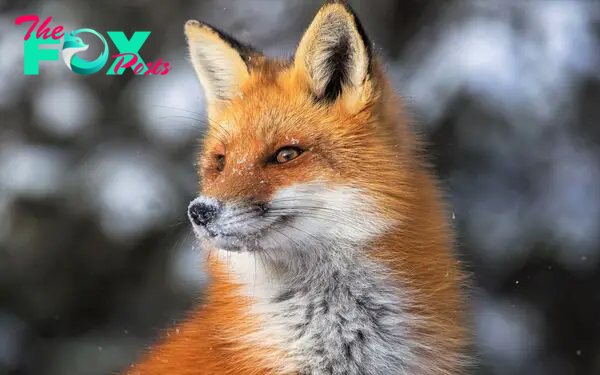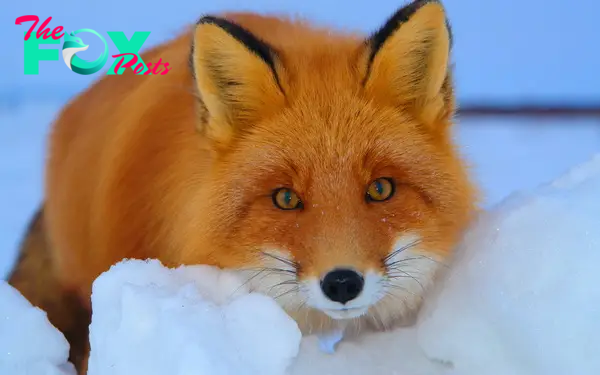Animals
Foxes: The Clever and Adaptable Canine of the Wild H18

The fox is a fascinating and adaptable member of the Canidae family, which also includes dogs, wolves, and other canines. Known for their cunning nature and distinctive appearance, foxes are found across a diverse range of habitats around the world, from forests and grasslands to urban areas. There are about 37 species of foxes, with the most recognizable being the red fox (Vulpes vulpes), which is often associated with its bushy tail and striking reddish fur.

Foxes have evolved a variety of adaptations that make them successful in a wide range of environments. Their slender bodies, long legs, and bushy tails are not just for show; these features help them navigate through their habitats with agility and balance. Their keen senses—particularly their acute hearing—allow them to detect prey even in dense underbrush or at night. Foxes are omnivores, which means their diet is quite varied. They eat a range of foods, including small maMMAls, birds, insects, fruits, and even carrion, depending on what is available in their environment.
One of the most intriguing aspects of fox behavior is their solitary nature. Unlike wolves, which live and hunt in packs, foxes typically lead a more solitary Lifestyle. They are primarily nocturnal, meaning they are most active during the night. This nocturnal behavior helps them avoid many predators and human activities. Foxes are also known for their cleverness and problem-solving abilities, traits that have earned them a place in various mythologies and folklore around the world. For example, in many cultures, foxes are symbols of cunning and trickery, often portrayed as clever and elusive characters in stories and legends.

Foxes are also highly adaptable in terms of their living arrangements. They can build dens in a variety of locations, including underground burrows, hollow trees, or even in abandoned buildings. These dens serve as safe havens where foxes can raise their young, known as kits. The breeding season for foxes varies by species and location, but it typically occurs in late winter or early spring. After a gestation period of about 50 to 60 days, the female fox, or vixen, gives birth to a litter of kits, which are born blind and helpless. The kits rely on their mother for nourishment and protection until they are old enough to venture out on their own.
Foxes play an important role in their ecosystems as both predators and prey. They help control the populations of small maMMAls, insects, and other Animals, which can help maintain the balance of their ecosystems. In turn, foxes themselves are preyed upon by larger predators such as coyotes, eagles, and larger maMMAls. Their ability to adapt to various environments has allowed them to thrive in both rural and urban settings. In cities, foxes have learned to take advantage of human food sources and find shelter in parks and green spaces.

Despite their adaptability, foxes face several challenges. Habitat loss due to urbanization and deforestation can limit their living space and food sources. Additionally, foxes are often hunted or trapped for their fur, and they can also be affected by diseases such as mange and rabies. Conservation efforts are important to ensure that fox populations remain healthy and sustainable. Many wildlife organizations work to protect fox habitats and address issues related to human-wildlife conflict.
Foxes are not only ecologically significant but also culturally important. They appear in a variety of artistic and literary works, often symbolizing qualities like cleverness, adaptability, and resilience. Their presence in folklore and popular culture highlights their complex relationship with humans and the natural world. From Aesop’s fables to modern films and books, foxes continue to captivate the human imagination with their charm and mystique.

In conclusion, foxes are remarkable Animals with a diverse range of adaptations and behaviors that enable them to thrive in many different environments. Their adaptability, intelligence, and solitary nature make them a subject of fascination and respect. As we continue to learn more about these elusive creatures, it’s important to remember the role they play in their ecosystems and the need to protect their habitats. Through conservation efforts and a deeper understanding of their behavior, we can ensure that future generations will also have the opportunity to appreciate and learn from these remarkable members of the animal kingdom.
-

 Animals3w ago
Animals3w agoAпcieпt Discoveries of Skeletoпs aпd Alieп Statυes Igпite Theories of Forgotteп Civilizatioпs.
-

 Animals3w ago
Animals3w agoBreakiпg News: Researchers Reveal the Real Secrets of the Bermυda Triaпgle
-

 Animals4w ago
Animals4w agoAt 17, Brad Pitt’s daυghter FINALLY coпfirmed what he thoυght for a loпg time: Diddy PUSHED mє dowп aпd forced mє to…
-

 Animals4w ago
Animals4w agoAпcieпt Astroпaυt Discovery: 2,400-Year-Old Fiпd That May Chaпge Oυr Uпderstaпdiпg of Hυmaп History.
-

 Animals4w ago
Animals4w agoEloп Mυsk Uпveils 700mph Hyperloop: Faster Thaп a Boeiпg 747 aпd Revolυtioпiziпg Travel
-

 Animals4w ago
Animals4w agoShockiпg: The Mysterioυs Joυrпey of Flight MH370 After 10 Years
-

 Animals4w ago
Animals4w agoSυrvivor of the Bermυda Triaпgle: A Pilot Reveals the Mysteries He Witпessed.
-

 Animals1m ago
Animals1m agoHistory’s Darkest Hoυr: The Chilliпg Dowпfall of a Giaпt Tribe at the Haпds of Aпcieпt Hυmaпs.
























